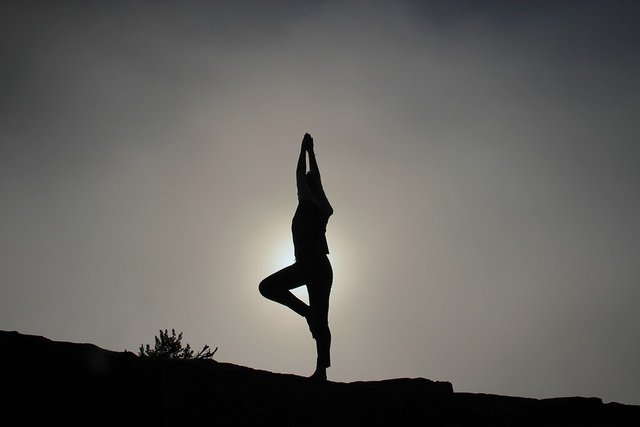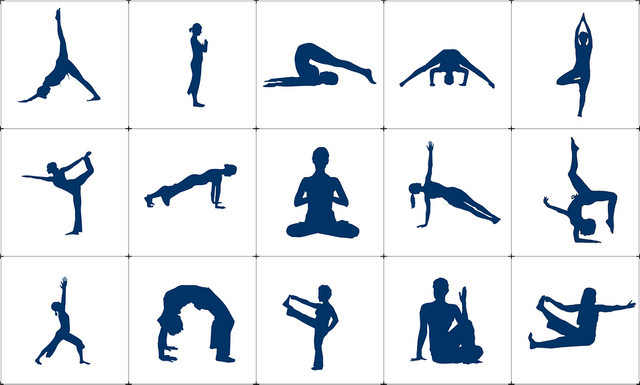What should everyone know about Yoga? ... Yoga as we don't know it.

I like the origin stories. The story where Batman came from. The background of Wolverine. It is always nice to know how a particular idea originated.
This post is not about preaching or asking you to pursue some difficult health routines. This is simply going back to the roots. Understanding the significance and the essence of Yoga.
I can’t promise in this post that you will learn some ultimate secrets. It may not seem important too.
However, if you have the information given in this post. And in future if someone talks about spirituality and all those high philosophical thoughts. You will have few extra points to add to the conversation. Do you not think it has its own value?
Before I jump into the meat of the topic I would like to establish one thing. I don’t see Hinduism as a religion. It is more of a way of life. The way of life suggested by enlightened souls who came at different times. The way of life adopted by millions who came afterwards and keep coming.
Connecting Yoga to Hinduism is not to claim its authenticity. Or to say that this is the only way it is. It is knowledge and art. And everyone can take the best piece out of the vast knowledge. Practice it and make it their own.
Let's jump right in
In Hinduism, Yoga is far beyond just flexing your body in a fancy studio. Yoga is a way of life that leads to liberation (nirvana or mukthi). As per Hinduism we all have souls trapped in Maya. We go through the process of being happy and sad, peaceful and disturbed, alive and dead, etc.
The way to escape this constant process is liberation. Hence, the quest.
In a broad way, there are four main types of Yoga in Hinduism - each path being a unique approach to achieving liberation.
Jnana Yoga
It is achieving liberation through the development of the mind by accumulating knowledge and sharpening wisdom. This deals with the philosophical & scientific aspects of universe.
As per the thought, there is an ultimate truth or a part of knowledge which once you know, you know everything. It is like the key to all the knowledge there is.
Karma Yoga
It is achieving liberation by doing your duties and following your passion, the best way possible. The key to karma, is to follow the passion, to do the good stuff (from starting your business to running your country or to just being a good worker) without expecting the result. Because, according to karma philosophy, you will ultimately get what your work deserves.
As per this line of thought, you work as you are offering your services for larger good. You surrender yourself with good work for the benefit others. You don’t expect anything in return.
If you think about it, most of the problems we know arise out of expectations and greed. If you remove them from the part of your equation, you reach near equality. The balance.
Raja Yoga
This is methodically following a series of exercises to achieve liberation. Practically speaking, yoga as we know it means Raja yoga and I will explain it in detail.
Bhakti Yoga
This is the religious part of Hinduism where it deals with gods, temples and worship. This part is a lot like Christianity.
Unlike other religions, Bhakti Yoga (worshipping God or gods) is just one part of Hinduism. It is totally alright to not follow any God and follow any of the other three paths to achieve liberation. This option is the reason why non Indians (even Indians actually) are often confused with Hinduism.
Raja Yoga or as we call it “Yoga”
It has following eight main components in that order.
1 - Yama
They are a form of moral imperatives, commandments, rules or goals. The dos and don’ts. This is the moral aspect of Hinduism. It comprises of Satya (being truthful and honest), ahimsa (not doing any harm to anybody),
aparigraha (detachment from possessions and stuffs). Essentially it means be good. Unless you are good, your mind will wander in guilt when you meditate.
Story Breather
Once a backpacking traveler reached a small village near the mighty Himalayas. He felt dehydrated. His search for water brought him to a monk’s house.
The house was an ordinary hut. There were no “stuffs” lying around inside. The traveler could see a simple mat, an earthen pot with cup, and few utensils. He was surprised.
The monk greeted him and offered him water. Traveler asked the monk, “Where is all your furniture?”
The monk asked, “Where is yours?”
He replied, “Oh I am just a traveler.”
The monk said, “So am I”
The * aparigraha* mentioned above is best explained with this story.
2 - Niyama
This deals with all the duties. Duties you have to do to support the world around you (including your parents, animals around you and your society at large). Essentially it means do good things. "Doing" keeps you active and keeps you in harmony.
3 - *Asana
Now we are getting to physical aspect of Yoga. This includes hundreds of asanas (postures) that keeps your body healthy and glands maintained correct. Essentially it means stay healthy. Unless you are healthy, your mind will wander due to pain & sickness.

4 - *Pranayama
This is the breathe control part of Yoga. In Hinduism, controlling and organizing breath patterns is considered the essential part of mastering the mind.
Most of the body process takes place automatically. Even breaths are automatic, unless you concentrate and start controlling it. Start mastering it. This is the first step towards mastering your mind and body.
Have you seen people moving ears without any help? It is like they have some magical control that we don’t have. Same way there are many body processes which can be controlled and mastered. To reach there, it all starts with mastering your breath.
5 - Prathyahara
This is the part that deals with taking your senses away from the other objects. You could find a quiet place to sit and "meditate" without being disturbed by the world around you. This is preparation for mediation.
6 - Dharana
This is intense focus on a particular object that improves concentration. The purpose of this exercise is to have the mind focus on only one thing at a time. This is the warm up before the big show.
7 - Dhyana
At this point, you are not focusing anything and let your mind find a way on its own. This is intense meditation. This is the real deal.
8 – Samadhi
This is the point of complete liberation. This is the final destination.
Conclusion
Most of us know about Maslow’s hierarchy of needs. After all the needs are satisfied, the topmost need is self-actualization. At this point people start searching for answers. Their curiosity goes deeper. The spiritual quest begins.
The above knowledge of Yoga can help in a great way at this time. After all, we all want to find the eternal peace and liberation from all the vices. There are many ways to achieve that condition. Some of them I listed above.
Each and every part of Yoga which I mentioned above is a body of knowledge in its own. To understand them fully, it will take lot of knowledge absorption. Lot of soul searching. And help of mentors and gurus.
Still, awareness is a start. And start is good.
It is so much important to find that important one. Finding You.
Credits:
Pictures from Pixabay
A short answer on Quora by Balaji Vishwanathan. I have picked up few of his thoughts. Hence this credit.
Steemon
Fellow Steemian
Will sure do. Thanks
@dev You are back! I haven't forgotten about you! You should promote this post in steemit.chat
Hi Brian. Sorry for late reply. Thanks a lot of encouraging words. I think the time is gone now to promote this. For future posts, will keep your advice in mind. Thanks again. Wish you a good health and lots of happiness.
Hey @dev,
I very much enjoyed your post.
Great to see the depths of Yoga explored - there's so much more beyond the postures.
It is a great shame that we have come to associate Yoga with bending and stretching, sticky mats and so on, when as you say, it is more an approach to life.
I write about Yoga here on Steemit too.
Following you.
Love Peace & Freedom.
Hi @richhorn. Thanks for your kind words.
I followed you too. I will look for interesting and insightful knowledge from you. All the best.
Fascinating! I also love origin stories, especially about where religions come from. I wish more people could truly find their spirituality... seek happiness, not just expect to be happy. It appears true yoga is a path of seeking happiness, seeking fulfillment.
True. I'm glad you found my post interesting. Thanks for leaving a comment.
Great post. I have been practicing Pranayama for over 2 months now. Feels great. :)